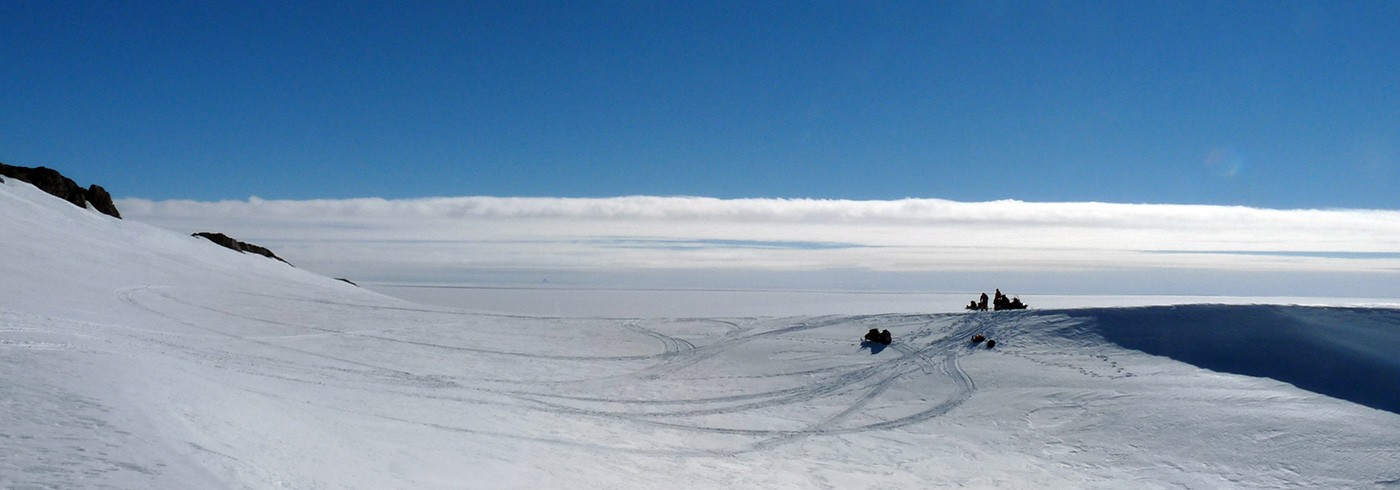Models show what happens with the Antarctic ice sheet when the climate changes
15 December 2017 - 10 February 2018
Mountain Ulvetanna (meaning wolf tooth) in Dronning Maud Land – both high and dramatic. Photo: Carl Lundberg

Schirmacher Oasis. Photo: Carl Lundberg
Almost all of Antarctica is covered with ice. In Dronning Maud Land, Antarctica, the ice is so thick that only the highest mountain tops, so called nunataks, extend above the ice level. The nunataks can provide information regarding past changes in ice volume. Visible traces of the ice sheet, such as scrape marks and ice grooves, can be seen on glacially sculpted bedrock on the slopes of the nunataks. The marks were created when the glacier moved icebound stones and boulders which scratched and abraded the bedrock as the ice moved. Boulders from different places were deposited on the nunataks from the ice as the ice level decreased.
By collecting and analysing samples from boulders on different heights and areas, the scientists can reconstruct ice sheet surface changes since the last glacial maximum 21,000 years ago. With the help of newly assembled data the scientists can test and improve computer models which can show us what will happen to the Antarctic ice sheet when the climate changes. If only a small part of this gigantic ice mass melts, it will be enough to raise the sea level by several metres, and these models can show how large the changes in the ice sheet can be and how quickly the changes will occur.

Sampling at the south side of Gronehogna. Photo: Fredrik Hägglund
During the field season this winter, the scientists visited locations which are particularly significant for testing and developing the computer models. In total 87 rock samples from 16 different nunataks were collected along a 200 km long transect, from the mountain range Borgmassivet to Ahlmannryggen in Dronning Maud Land. To reconstruct changes in the ice sheet, concentrations of cosmogenic nuclides in the samples are measured. In that way, the scientists can find out how long a rock sample has been exposed to cosmic radiation and thus been free of ice.

